Livraison offerte dès 79€ d'achat !
Nouveautés : Les Infusions, les Ultrasons et les Upcycling !
Livraison offerte dès 79€ d'achat !
Nouveautés : Les Infusions, les Ultrasons et les Upcycling !
O myrrh, a formidable fragrant resin steeped in symbolism and history! It was first used in Egypt with its solid perfume Kyphi, a kind of sacred incense burned in honor of the god Ra.
Greek legend has it that Myrrha, daughter of Cinyras, king of Cyprus, was transformed into a tree by the gods for an incestuous relationship; the gum-resin being none other than the princess’s tears.
Finally, myrrh was also an offering made by the Magi king Balthazar for the birth of Jesus.
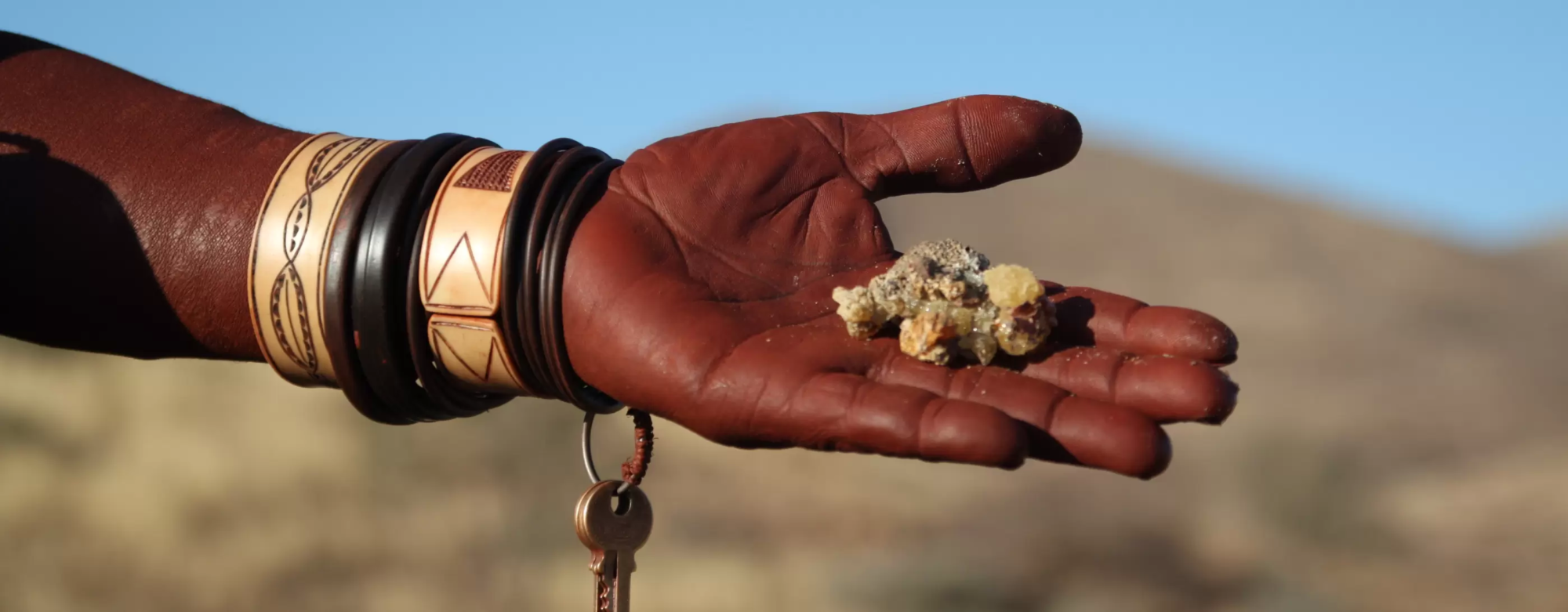
So when we speak of Myrrh, there’s bound to be a heavy symbolism.
And the first thing that comes to mind is Commiphora Myrrha, found mainly in the Arabian Peninsula and Somalia.
But at the time of writing, 37 species of Commiphora have been recorded in Africa, the vast majority of them from the south of the continent (29 in Namibia alone).
And most of these commiphora species exude resins with potential for the manufacture of aromatic extracts.
Such is the case with Namibian myrrh, or Omumbiri myrrh (Commiphora wildii), recently discovered and harvested for the perfume world since 2004.
Endemic to the country, it is found in the heart of the Kunene region in north-western Namibia.
A kind of small, dry thorny shrub, the omumbiri cracks during periods of intense heat (from October to January) and oozes myrrh resin, harvested with bare hands by the women of the Himba tribe.

There is no myrrh cultivation in Namibia.
We simply pick what nature gives us each year, no more, no less.
So there’s no question of excising the shrub to increase yields (which would inexorably reduce them for years to come).
And since 2004, when the IRDNC association created a development network to provide financial support to the Himba Tribe, they have been the only ones authorized to harvest the material.
The Himbas are semi-nomadic pastoralists who support their communities by raising livestock, mainly red cows and goats.
But during the very hot periods between November and January, the Kaokoland desert is very low in nutrients, and the animals cannot be fed properly to be sold.
So harvesting myrrh provides the income needed to buy food for the animals and meet the community’s other needs.
It’s almost exclusively a woman’s job, since men traditionally look after the herd.
They set off early in the morning, often accompanied by their babies, to collect the drops of myrrh resin from the Commiphora trees.
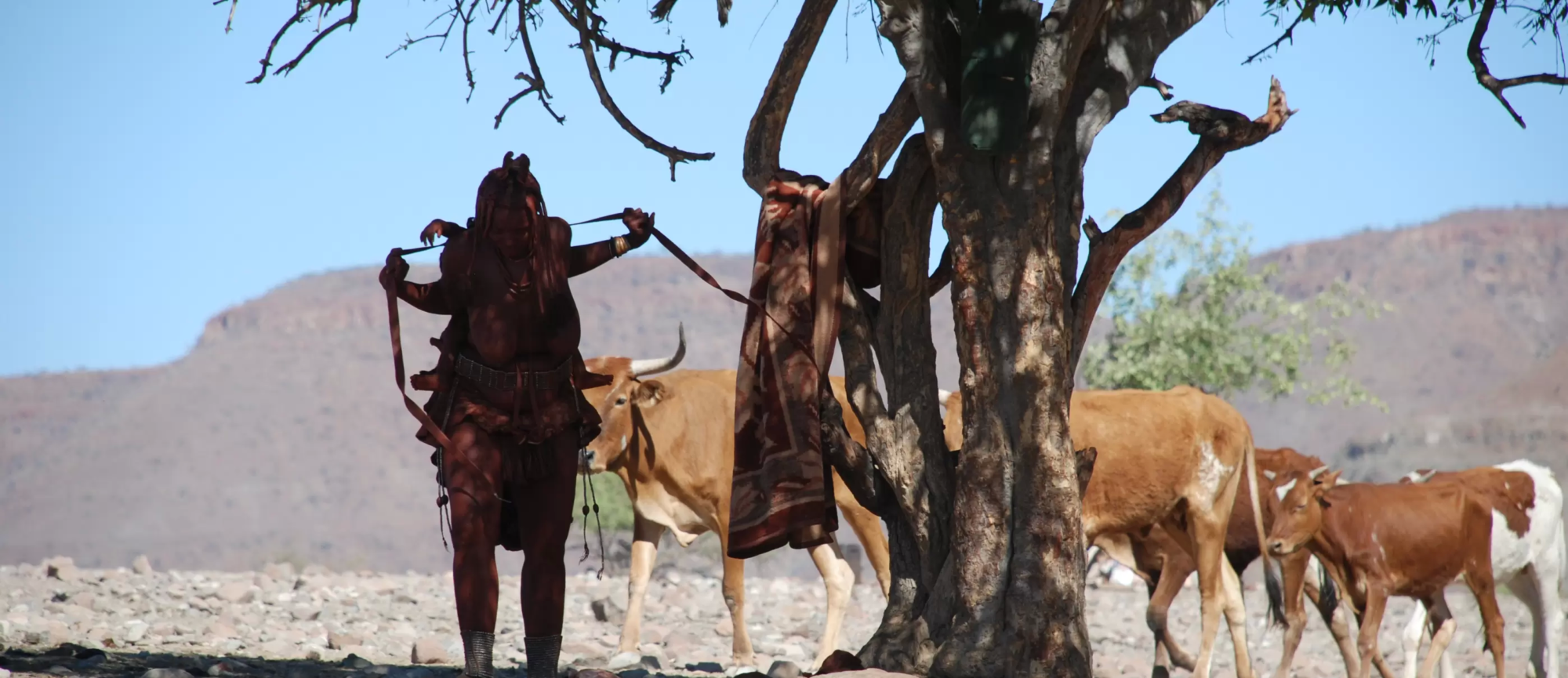
Once the day’s harvesting is over, the women sort the myrrh (keeping some for body care) and take the rest back to the cooperative set up for the purpose, for resale.
Each woman resells her harvest in her own name, the myrrh is weighed, the harvesting area and the name of the harvester are noted, and the latter recovers the market value of her omumbiri myrrh (the sale price is set with and in the interests of the Himbas).
In the Himba tribe, Namibian myrrh is an essential ingredient in the creation of a fragrant beauty cream, a DIY lotion that every woman learns to master.
Myrrh is mixed with the cream of their cows’ milk (preserved in a horn) and powdered hematite (a magnificent red stone that the women quarry every month).
The women and children of the tribe smear this cream on their bodies and hair every day.
To repel the many insects and protect themselves from the sun, but above all as a beauty cream.
This beautiful red color is especially intended to resemble their cows, and is in fact the highest compliment you can pay a Himba woman.
Not to be reproduced at home.

Namibian myrrh has only recently been discovered and, as far as we know, there are no records of older uses for the material.
Since 2004, however, the material has been processed into essential oil for the manufacture of perfumes, not least because its fragrance is reminiscent of the characteristic smell of turpentine.
At present, there are no other common uses for Namibian myrrh.
Transformed into an essential oil, Namibian myrrh is particularly rich in alpha and beta-pinene.
As both molecules are renowned for their antibacterial, antifungal and antiviral properties, it has great potential in aromatherapy.
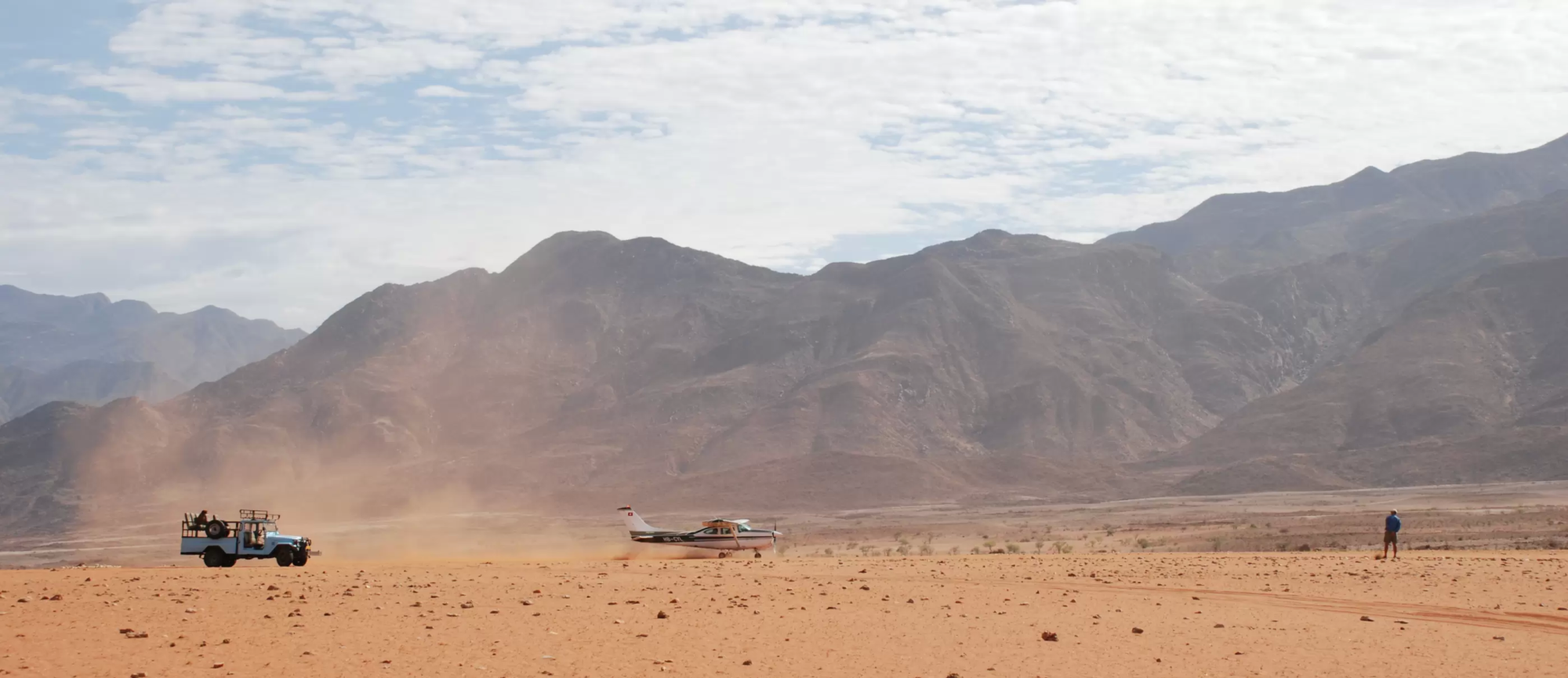
The story began in 2007.
At the time, we were the only company marketing a single material (Santal Spicatum).
Perfumers began to approach us with the idea of expanding our range.
We weren’t sourceors yet, but rather representatives of an industry.
And we hadn’t really thought about whether we wanted to be.
But one meeting was to change our lives forever.
In April 2007, we headed off to the cosmetics trade show.
When we got there, we bumped into Karen, a wonderful and engaging Namibian woman, in charge of protecting biodiversity and the ethnic groups living in the Kaokoland region of north-western Namibia.
We hit it off immediately.
She told us about the Himba tribe and the program she had just set up with her association Integrated Rural Development and Nature Conservation (IRDNC).
In collaboration with the government, the mission aims to offer them opportunities to cultivate a species of Myrrh endemic to the region and derived from a small shrub called Omumbiri (or Commiphora Wildii).
We were captivated by his work.
The appointment was made.
In December, we took off for Windhoek where Karen was waiting for us.
Without wasting any time, she took us straight to meet the Himbas, who generously welcomed us into their tribe for the week.
Known since the 15th century and originally from the banks of the Nile in Egypt, the Himba community has long been nomadic, traveling throughout southern Africa with the seasons.
An ethnic group of hunter-gatherers, their culture is the antithesis of the Western world, and in recent years they have been expelled from many countries, notably Angola, before Namibia agreed to welcome them to Kaokoland, near the Kunene River, in the north-west of the country.
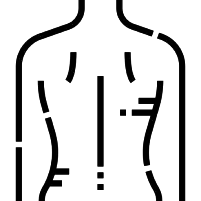
Since 2007, between November and December (which corresponds to periods of extreme heat), over 600 members of the Himba community earn between €80 and €400 from harvesting and processing the resin produced by the Omumbiri.
It’s almost exclusively a women’s job, with the men looking after the livestock, which cannot be sold in these dry seasons.
Because of their remoteness from society, this income is fundamental to feeding the community and the livestock, as well as providing care for the village.
It’s a wonderful initiative that we’ve been supporting since our first trip to Namibia, and one that has no end in sight.
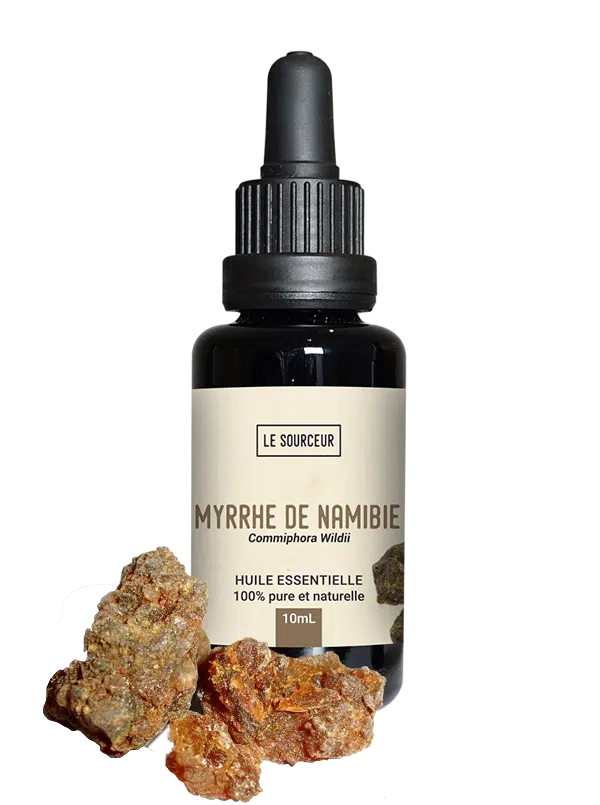
“Sur la Piste des senteurs” Episode 1: Namibia, the myrrh of the Himbas Production: Flair Production, TV5 Monde, Ushuaïa TV Director: Daniel Serre
Journal d’un anosmique, “Namibie” by Stéphane Piquart & Albin de La Simone
Ke-Nako (It’s time), comic published by Expression Cosmétique, Drawing by Jef, Story by Stéphane Piquart


 informations
informations  mon compte
mon compte  contact
contact Copyright © 2024 Le Sourceur. Tous droits réservés / Développement : Mrlsagency
 matieres sourcees
matieres sourcees  rejoindre la tribu
rejoindre la tribu